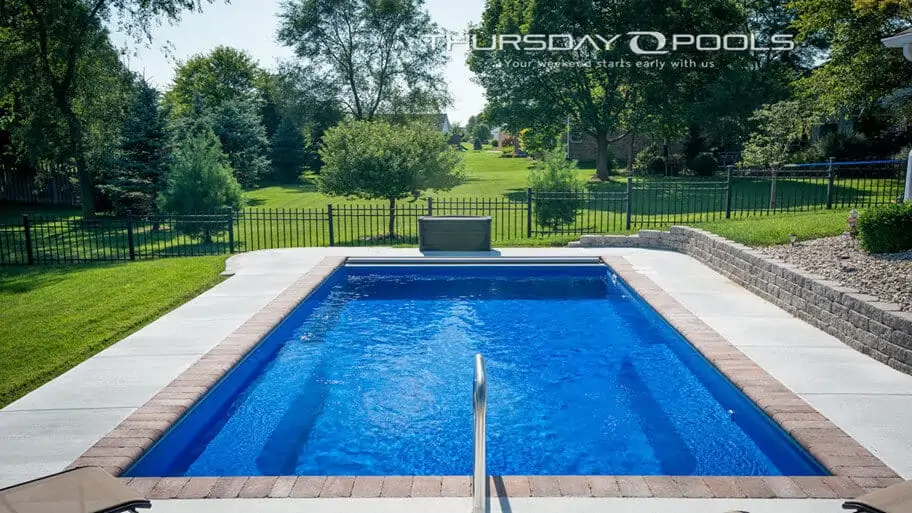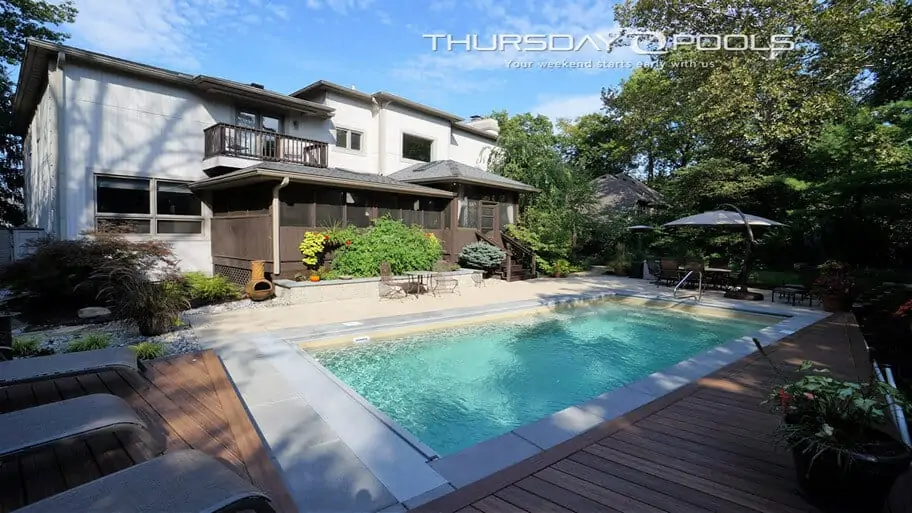All inground swimming pools should be surrounded by a patio that can consist of a variety of materials such as:
- Standard Concrete
- Stamped Concrete
- Concrete Pavers
- Brick
- Travertine
- Natural Stone
- Brick Pavers
Each of these materials brings a different aesthetic to your pool project and can aid in making a unique design that makes it one-of-a-kind. But while the patio is a feature heavily focused on, the transitional area between the patio and the pool itself is not even though it’s just as important. And what is this transitional area called, you ask? Well, its official name is coping.
Coping is the border around the immediate edge of an inground swimming pool that bridges the gap between the pool itself and the patio surrounding it. In other words, it’s a material installed around the edge of the pool (used for looks as well) that attaches the pool to the patio, locking it in place (think of it like superglue). And that’s just what we’re going to discuss in this article.
In particular, we’re going to tell you all about cantilevered coping—the standard form of coping included in most base inground pool packages.
We’ll cover the pros, cons, installation process, and more! So let’s get started!
Installation Process
The name “cantilevered” because of the finish it creates over the edge of the pool as a final product.
You see, concrete is poured over the edge of the pool shell or structure and ends a few inches above the waterline. This shape is created by placing Styrofoam molds over the concrete when it is poured and removing them once it has dried and hardened.
In its final form, cantilevered coping should create a rounded lip at the edge of the pool which has a few benefits:
- Less chance of injury compared to a sharp/jagged edge
- Seamless transition from patio to pool
- Simple, yet attractive aesthetic
The video below may give you a better understanding of how cantilevered concrete coping is created.
Advantages
1. Cantilevered concrete is one of the more affordable options for coping at $6-$10 per linear square foot. And even at the lower end of the price range, it still creates a beautiful finished product. As of 2023 cantilevered coping is required for all fiberglass pools.
2. The rounded edge of cantilevered concrete reduces the risk of injury when compared to a sharp or jagged edge. Plus, it’s easier to hold on to while in the pool.
3. Since cantilevered concrete is poured onto edge of the pool shell/structure and directly to the rest of the patio, it locks the structure in place and helps prevent shifting in the future.
Disadvantages
1. Cracking will occur in concrete regardless of the type. Now, it will occur years in the future, but it will occur.
2. Since cracking will occur, the concrete will need to be refinished in the future. Therefore, there are future expenses that you’ll need to take into account.
3. Improper use of Styrofoam molds, the concrete may lack the rounded finish at the edge of the pool or be inconsistent around its entire diameter.
How Far Does Cantilevered Coping Extend from the Pool?
Cantilevered coping can extend anywhere from a few inches to over a foot away from the pool to make sure the structure is locked into place with the earth surrounding it. However, keep in mind that the coping isn’t necessarily the same thing as the patio.
The patio will begin immediately after the end of the coping, creating a seamless transition that isn’t just structurally sound, but aesthetically pleasing as well. For the patio, you can choose materials like those we listed at the beginning of this article (stamped concrete, brick, natural stone, etc.) to complement the coping. Some may complement the cantilevered coping more than others, but if you like a certain patio material more than others and it doesn’t quite go with cantilevered coping, there are other coping materials available such as pavers, travertine, bluestone, and more!
Your pool project is just that—your pool project. So, you get to make the final call about every aspect, including coping and patio options.
Our hope is that we’ve given you the proper information about cantilevered coping to decide if it’s the right fit for you one way or another. And if not, that’s fine! You can give us a call at (219)-322-2797 for any questions or check out some of our other articles about other types of inground pool coping!



